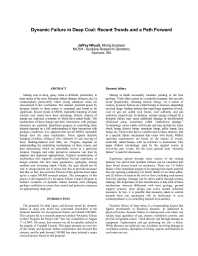Mining Publication: Dynamic Failure in Deep Coal: Recent Trends and a Path Forward
Original creation date: July 2008
Mining coal in deep, gassy strata is difficult, particularly in deep mines of the west. Dynamic failure (bumps, bounces, etc.) is commonplace, particularly where strong sandstone strata are encountered in the overburden. The disaster potential posed by dynamic failure in these mines is examined and found to be significant. Recent trends in MSHA reportable bumping of deep western coal mines have been increasing. Recent clusters of bumps are explored, a number of which have ended badly. The mechanisms of these bumps and their interactions with geologic structures are explored. Significant progress in controlling these hazards depends on a full understanding of their interaction with geologic conditions. It is apparent that not all MSHA reportable bumps have the same mechanism. These reports describe bumping of pillars, rolling of ribs, outbursts of coal, heaving of floor, shaking-induced roof falls, etc. Progress depends on understanding the underlying mechanisms of these events, and then determining which are potentially active at a particular location. Designs and other protective measures can then be adapted and deployed appropriately. Explicit consideration of mechanisms also supports extrapolation beyond experience as design extends into new mine geometries, geologies, mining methods and increasing depth. Finally, the goal should not be only to design hazard out of mines, but also to provide assurance that this, in fact, has occurred. Pursuit of this goal has been taken up by a major NIOSH research project. The centerpiece of this project is development of a Dynamic Failure Control Program to monitor evolution of dynamic failure hazards with changing geologic conditions to assure that control and protective measures are appropriately deployed.
Authors: JK Whyatt
Conference Paper - July 2008
NIOSHTIC2 Number: 20034346
Proceedings of the 27th International Conference on Ground Control in Mining, July 29 - July 31, 2008, Morgantown, West Virginia. Peng SS, Mark C, Finfinger GL, Tadolini SC, Khair AW, Heasley KA, Luo-Y, eds., Morgantown, WV: West Virginia University, 2008; :37-45
See Also
- 60 Years of Rockbursting in the Coeur D'Alene District of Northern Idaho, USA: Lessons Learned and Remaining Issues
- Building Capacity and Enhancing Ground Control Safety through Improvement and Extension of the LaModel Program
- Coal Mine Burst Prevention Controls
- Current trends in Reducing Ground Fall Accidents in US Coal Mines
- Current Trends in Reducing Ground Fall Accidents in US Coal Mines
- Diagnosing and Controlling Moisture-Sensitive Roof in Coal Mines
- Proceedings: New Technology for Ground Control in Multiple-seam Mining
- Rock Bursting and Seismicity During Ramp Development, Lucky Friday Mine, Mullan, Idaho
- Roof and Rib Fall Incident Trends: a 10-Year Profile
- Roof and Rib Hazard Assessment for Underground Stone Mines
- Page last reviewed: 9/21/2012
- Page last updated: 9/21/2012
- Content source: National Institute for Occupational Safety and Health, Mining Program


 ShareCompartir
ShareCompartir
